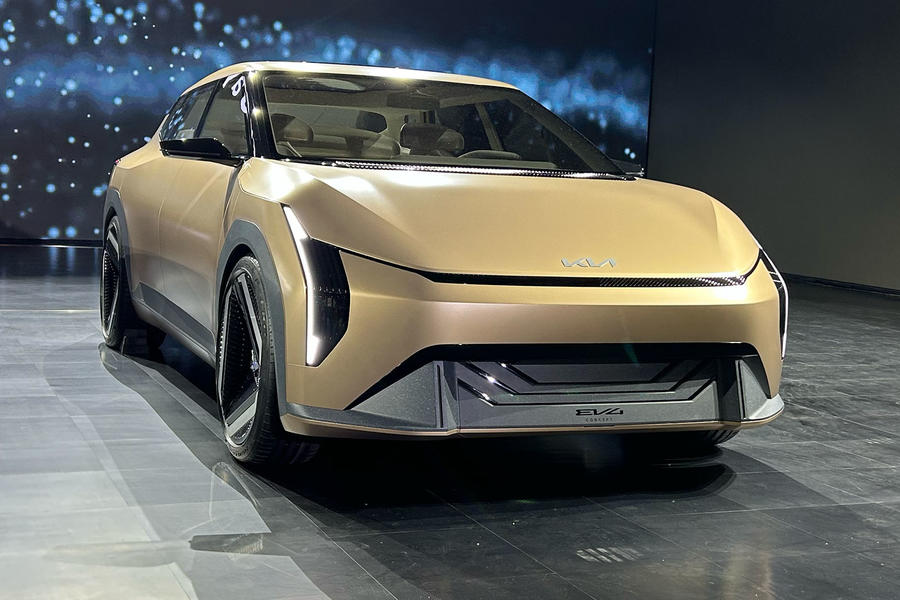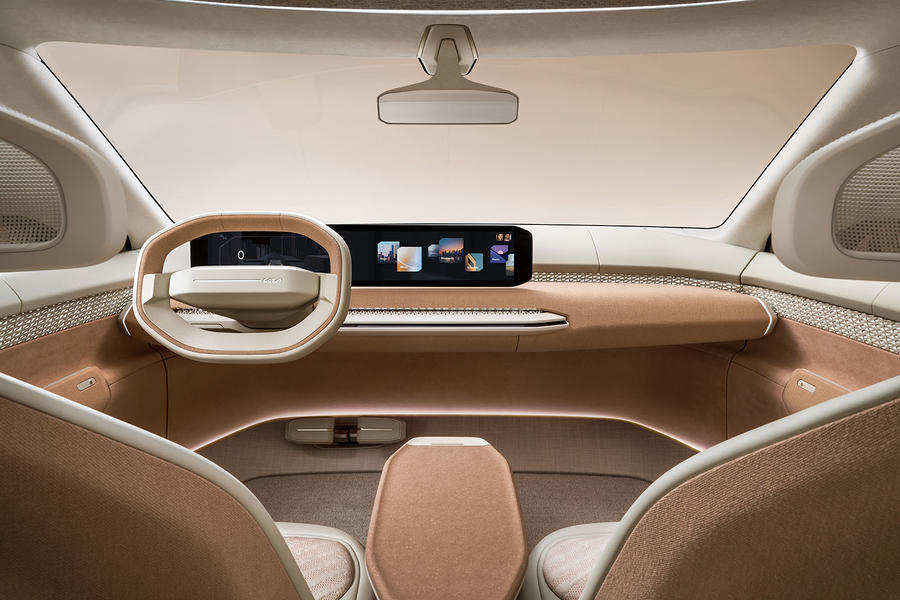This concept is very close to how the final production model will look
Sleek Polestar 2 rival rethinks the traditional saloon as one of four new Kia EVs
The new Kia Concept EV4 previews a bold electric saloon that will arrive in 2026 and serve as a “symbol of innovation” for the Korean brand.
The concept, which is very close to how the final production car will look, showcases the first saloon in in Kia’s line-up of EV-branded machines.
While broadly a saloon, the future Tesla Model 3 rival has a distinctive design that draws in elements from other types of car.
It was revealed at Kia’s EV Day in Seoul, Korea, where it was shown alongside the Concept EV3 SUV and the production version of the 2025 EV5 SUV – and where Kia confirmed plans for a smaller, European-focused EV2.
Kia design chief Karim Habib said: “We’re a brand that changes and adapts, and we want to ensure the products we provide remain relevant.”
He added that the EV4 was born “out of a challenger mindset”, with a goal to “shift the paradigms of [saloon] typography”, summarising: “It’s neither a true [saloon] nor a mono-volume [car].”

The EV4 features an unusually sharp slope on its front bonnet, while its version of Kia’s ‘tiger grille’ features the lights pushed right to the side edge of the car and mounted vertically.
There are exaggerated shoulders above the front wheel arches that meet the A-pillars of the sharply raked bonnet, while the roof has a coupé-esque slant.
The concept features a sharply sloping front bonnet, which features the lights pushed right to the side of the car and mounted vertically, while the roof has a coupé-esque slant.
There’s a small roof-mounted spoiler – something Habib said is “not found on a saloon” – and what he called “a long tail rear deck” that sweeps upwards to help optimise aerodynamic efficiency.
Habib acknowledged that maximising aerodynamic efficiency was more important for an electric saloon than an electric SUV, although he hinted that the EV4 offered a balance, not having the singular focus on minimising drag resistance as sister firm Hyundai’s larger Ioniq 6.

As with the EV3, the interior has more of a concept car feel than the exterior, with a minimalist dashboard, warm materials and a focus on space.
That said, several features are set to reach production, including the innovative table-style centre control that sits above a large storage cubby.
The dash itself is set off from the main interior bodywork by a light-up mesh and, as in the EV3, twin horizontal digital screens link together to house the driver’s information display and infotainment system.
The dash is largely shorn of buttons, but there are some to be found: in a novel approach, the air-conditioning control panel can be stored in a hidden compartment in the centre console.
There are also pin-style air vents that can actually change pattern when called upon. A range of ‘mind modes’ adjust the ambient lighting and animated vent patterns.

Kia’s colour, materials and finish team have used the concept’s interior to showcase a number of recycled and sustainable materials, with the overall colour of the car taking inspiration from the element earth.
The interior features trim from recycled cotton that has been dyed with madder roots and walnut shells, while hand-woven fabric strips adorn the storage area and dashboard to give a 3D effect.
The console table uses hemp fibres, which Kia claims can be grown sustainably and is highly mouldable.
Kia hasn’t given any firm technical or powertrain details about production version of the EV4, but it’s likely to use the same variant of the Hyundai Motor Group’s E-GMP platform as the EV5.

That means that both cars will be capable of accepting multiple battery sizes and technologies, along with both single- and dual-motor powertrains.
UK-bound versions will likely be offered with 215bhp front-wheel-drive and 320bhp four-wheel-drive versions.
However, like the EV5, the EV4 won’t be able to take ultra-fast charging like the EV6 and EV9.
Kia has yet to confirm where the EV4 will be produced, but it’s set to go on sale in 2025, following the EV3 and EV5 and at the same time as the EV2.
Source: Autocar
